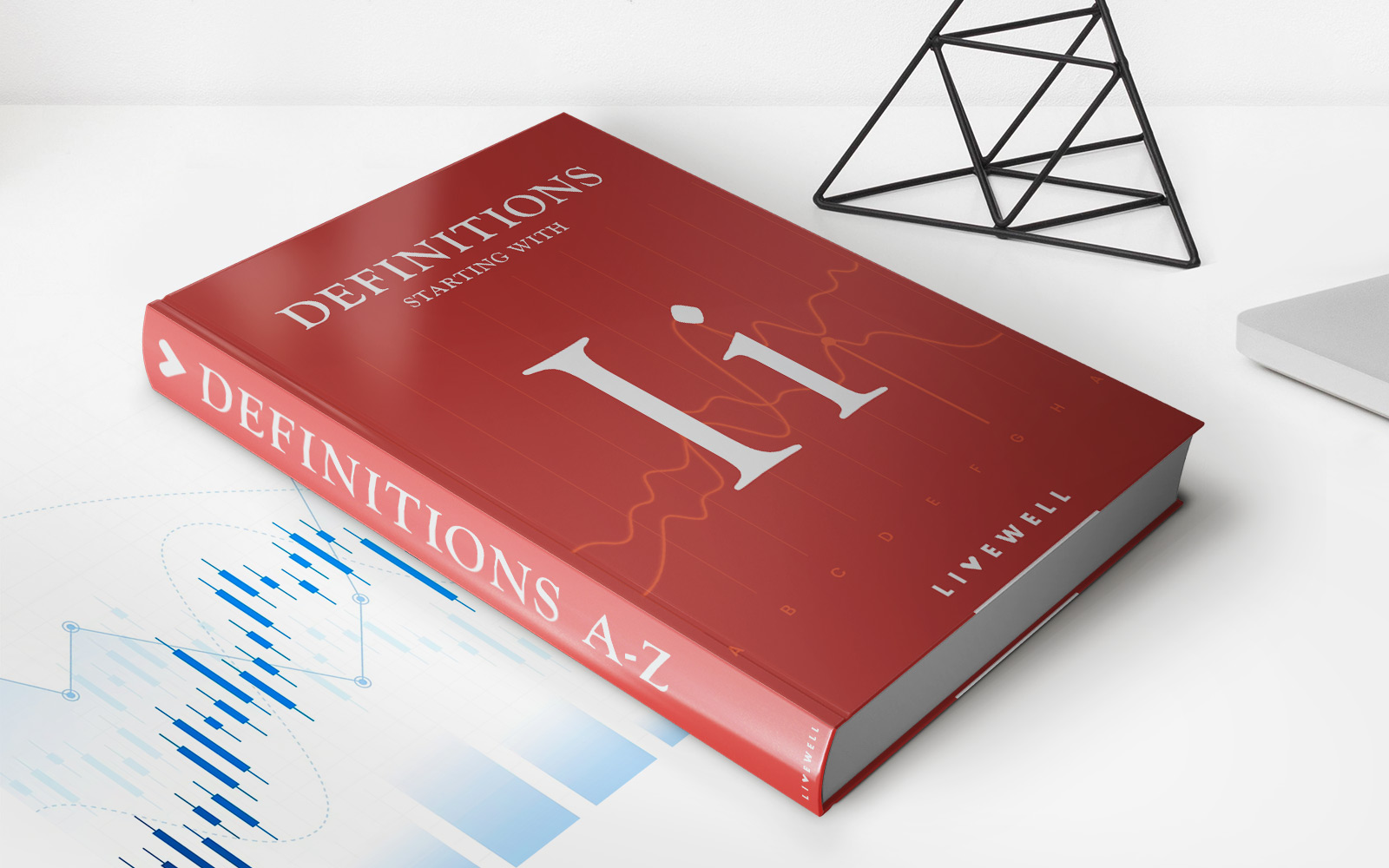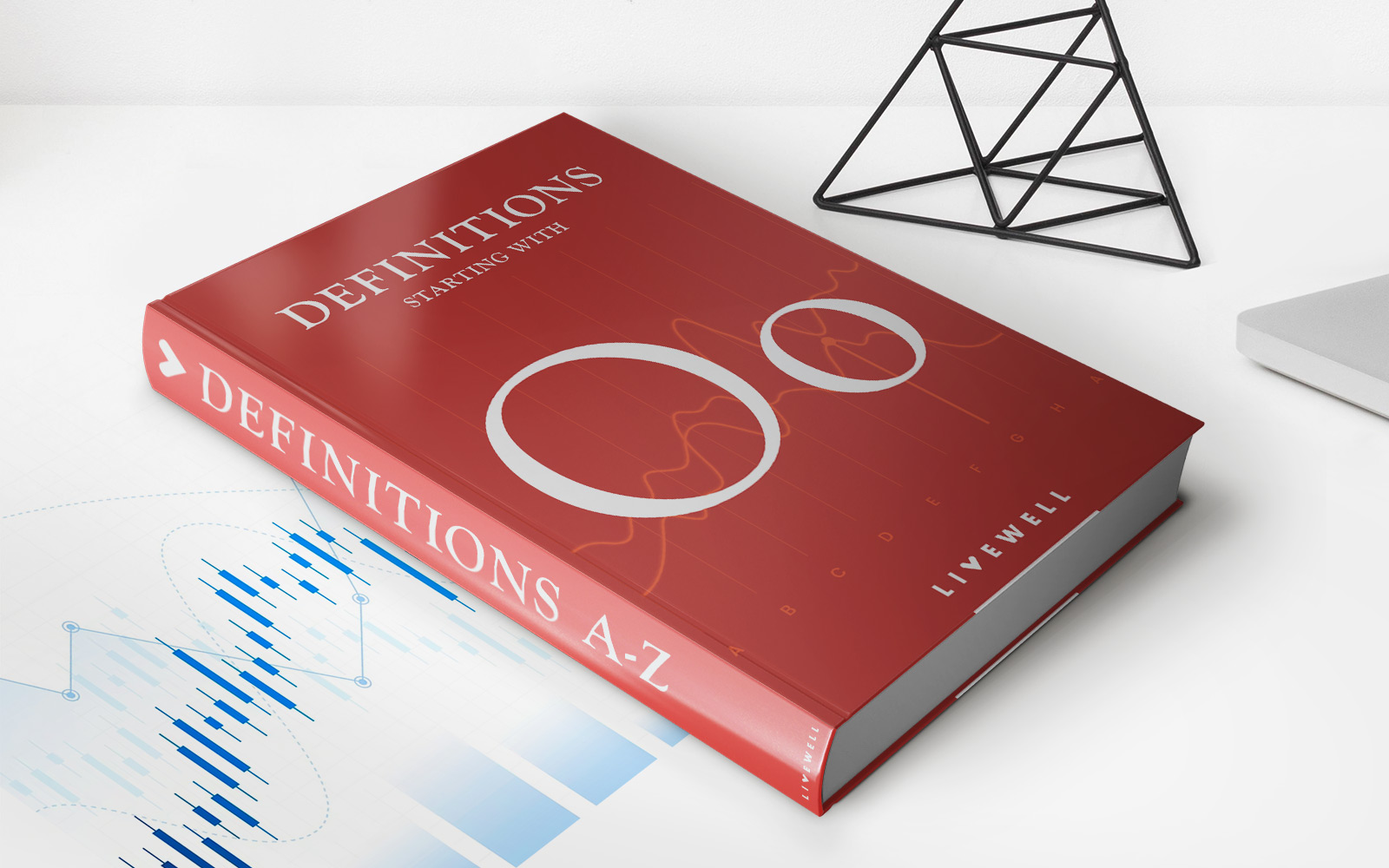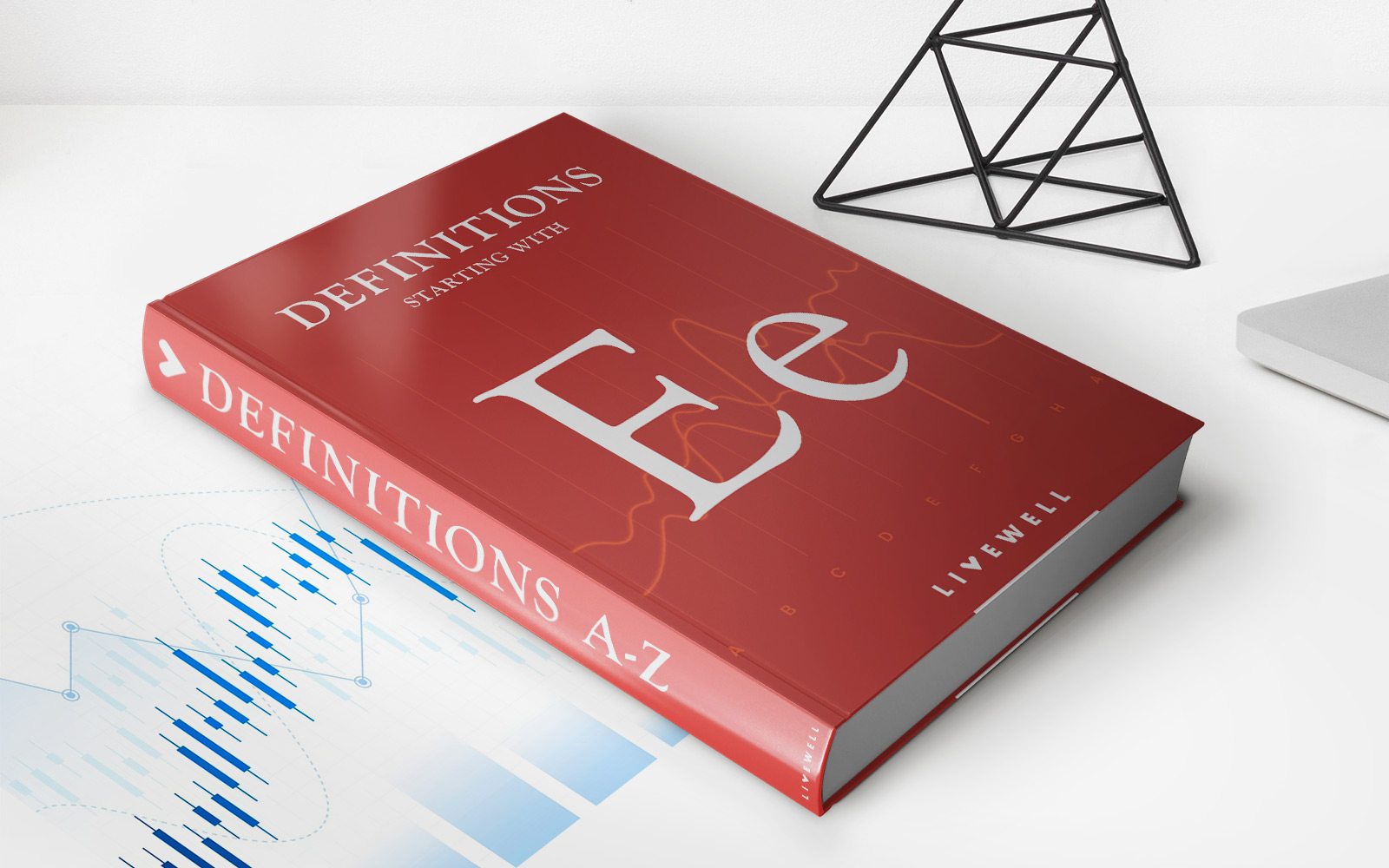

Finance
What Is 842 Lease Accounting
Published: October 9, 2023
Learn about the importance of lease accounting and how it impacts your financial statements. Discover the key concepts and regulations in finance related to 842 lease accounting.
(Many of the links in this article redirect to a specific reviewed product. Your purchase of these products through affiliate links helps to generate commission for LiveWell, at no extra cost. Learn more)
Table of Contents
- Introduction
- Background of Lease Accounting
- Overview of ASC 842 Lease Accounting Standard
- Key Changes under ASC 842
- Definition of a Lease under ASC 842
- Initial Recognition and Measurement of Leases
- Subsequent Measurement and Presentation of Leases
- Disclosures under ASC 842
- Transition to ASC 842
- Benefits and Challenges of ASC 842
- Conclusion
Introduction
Lease accounting plays a crucial role in the financial reporting of companies. It involves the recognition, measurement, and disclosure of leases, which are contractual agreements for the use of assets, such as property, equipment, or vehicles, over a specified period of time.
Previously, lease accounting was governed by the Generally Accepted Accounting Principles (GAAP) in the United States, specifically the Financial Accounting Standards Board (FASB) Accounting Standards Codification (ASC) Topic 840. However, in February 2016, the FASB issued a new lease accounting standard, ASC 842, which introduced significant changes to the way leases are accounted for.
The objective of ASC 842 is to increase transparency and provide users of financial statements with more accurate and comprehensive information about a company’s leasing activities. The new standard requires companies to recognize all leases on their balance sheets, including both operating and finance leases, and disclose more information about these lease arrangements.
ASC 842 has been effective for public companies since January 1, 2019, and for private companies since January 1, 2022. This article aims to provide an overview of the ASC 842 lease accounting standard, including its key changes, definition of a lease, recognition and measurement requirements, presentation and disclosure guidelines, and the challenges and benefits associated with its implementation.
By understanding the implications of ASC 842, companies can navigate the complexities of lease accounting, comply with the new standard, and ensure the accuracy and transparency of their financial reporting.
Background of Lease Accounting
Lease accounting has long been a topic of concern for businesses and stakeholders due to the potential impact on financial statements. Prior to the implementation of ASC 842, lease accounting was governed by ASC Topic 840, commonly known as FASB Statement No. 13 (or SFAS 13).
Under ASC Topic 840, leases were categorized as either capital leases or operating leases. Capital leases were treated as if the lessee had purchased the leased asset, resulting in the recognition of both an asset and liability on the balance sheet. Operating leases, on the other hand, were treated as rentals, with lease payments expensed over the lease term.
While this distinction provided some level of transparency, critics argued that it did not accurately represent the true financial obligations of a company. Operating leases, in particular, were viewed as off-balance sheet financing, as they were not reflected on the balance sheet, thus potentially misleading investors and other stakeholders.
As a response to these concerns, the FASB and the International Accounting Standards Board (IASB) embarked on a joint project to develop a new lease accounting standard that would address these shortcomings. The result was the issuance of ASC 842 by the FASB and International Financial Reporting Standards (IFRS) 16 by the IASB.
ASC 842 aims to provide a more complete and accurate representation of a company’s leasing activities by requiring lessees to recognize most leases on their balance sheets. This change was motivated by the desire to improve comparability across companies and ensure that financial statements provide a more faithful representation of a company’s financial position.
The implementation of ASC 842 represents a significant shift, as it requires lessees to recognize both finance and operating leases as assets and liabilities on the balance sheet. By bringing these lease obligations onto the balance sheet, stakeholders can now gain a clearer understanding of a company’s financial position and the impact of its lease commitments.
Overall, the background of lease accounting highlights the need for more transparency and accuracy in financial reporting, culminating in the implementation of ASC 842. By understanding the foundations and objectives of lease accounting, businesses can better navigate the changes and adapt their accounting practices to comply with the new standard.
Overview of ASC 842 Lease Accounting Standard
The ASC 842 lease accounting standard introduced significant changes to the way leases are accounted for and disclosed in financial statements. It applies to both lessees and lessors and aims to enhance transparency and comparability in lease reporting.
Under ASC 842, lessees are required to recognize most leases on their balance sheets. This includes both finance leases, which are similar to the previous capital leases under ASC Topic 840, and operating leases, which were previously treated as off-balance sheet obligations.
For lessees, the ASC 842 standard introduces the concept of a right-of-use (ROU) asset and a lease liability. The ROU asset represents the lessee’s right to use the underlying leased asset throughout the lease term, while the lease liability represents the lessee’s obligation to make lease payments over the same period.
Under ASC 842, lessees are required to initially measure the ROU asset and lease liability at the present value of lease payments, including any initial direct costs, and any lease incentives or payments expected to be made by the lessee. Subsequently, the lease liability is amortized over the lease term, and the ROU asset is depreciated over the shorter of the lease term or the asset’s useful life.
For lessors, ASC 842 largely retains the classification criteria from previous lease accounting standards. Lessors need to evaluate whether a lease is an operating lease or a sales-type/finance lease based on transfer of control and risks and rewards of ownership.
ASC 842 also requires additional disclosures to provide users of financial statements with more information about a company’s leasing activities. These disclosures include qualitative and quantitative information about the nature and terms of lease arrangements, significant judgments made by management, and future lease commitments.
Overall, the ASC 842 lease accounting standard represents a paradigm shift in lease reporting by bringing most leases onto the balance sheet. This change provides stakeholders with a more comprehensive and transparent view of a company’s lease obligations and their impact on financial position and performance.
By understanding the key provisions of ASC 842, businesses can adapt their accounting practices to comply with the new standard, improve financial reporting transparency, and ensure consistency and comparability across organizations.
Key Changes under ASC 842
The ASC 842 lease accounting standard introduced several significant changes to lease accounting, impacting both lessees and lessors. These changes aim to improve transparency, comparability, and consistency in lease reporting. Here are the key changes under ASC 842:
- Recognition of Operating Leases on Balance Sheet: Under ASC Topic 840, operating leases were not required to be recorded on the balance sheet. However, ASC 842 now requires lessees to recognize both operating and finance leases on the balance sheet as right-of-use (ROU) assets and lease liabilities. This brings more transparency to a company’s lease obligations.
- Modification of Lease Classifications: Asc 842 introduced new criteria for determining lease classifications. Previously, leases were classified as either operating leases or capital leases. Now, lessees must assess whether a lease is a finance or an operating lease based on whether control and the right to use the underlying asset is conveyed to the lessee.
- Enhanced Disclosures: ASC 842 requires lessees and lessors to provide enhanced disclosures regarding their lease arrangements. Lessees must disclose quantitative and qualitative information about their leases, including lease terms, discount rates, and significant judgments made in applying the standard. Lessors must disclose certain information about their leasing activities, such as profit or loss recognition policies and the nature of their leasing arrangements.
- Modified Lease Measurements: Under ASC 842, lessees must measure leases at the present value of lease payments, including any initial direct costs, lease incentives, or payments that the lessee is reasonably certain to make. This differs from the previous standard, which only required the recognition of lease payments over the lease term.
- Increased Use of Judgment and Estimates: The new lease accounting standard requires companies to exercise judgment and make estimates when determining the lease term, discount rate, and variable lease payments. This introduces a level of subjectivity in lease accounting and may result in differences in reporting across organizations.
- Impact on Financial Ratios and Key Performance Indicators: The inclusion of lease liabilities on the balance sheet under ASC 842 may affect financial ratios and key performance indicators (KPIs) such as debt-to-equity ratio, return on assets, and lease-adjusted leverage. Companies need to carefully analyze and communicate the impact of these changes to stakeholders.
By understanding these key changes, businesses can ensure compliance with ASC 842 and accurately reflect their lease obligations and financial position in their financial statements. It is essential to assess the specific impact of these changes on your organization and implement the necessary processes, systems, and controls to adhere to the new lease accounting requirements.
Definition of a Lease under ASC 842
The ASC 842 lease accounting standard provides a specific definition for what constitutes a lease. This definition is crucial in determining whether an arrangement should be recognized as a lease and accounted for under the new standard. The key elements of the definition of a lease under ASC 842 are as follows:
- Contractual Arrangement: A lease exists when there is a contractual arrangement between a lessor and a lessee, conveying the right to use an identified asset. The contractual arrangement can be written, oral, or implied based on the behavior of the parties involved.
- Right to Control the Use of an Asset: The lease arrangement grants the lessee the right to control the use of an identified asset for a period of time. The lessee has the ability to direct the use and obtain the majority of the economic benefits from the asset during the lease term.
- Payment of Consideration: The lessee is required to make payments, referred to as lease payments, to the lessor in exchange for the use of the asset. These payments can be fixed or variable and can include amounts for lease incentives, penalties, or contingent rentals based on factors such as usage or sales.
- Identified Asset: There must be an identified asset that is explicitly or implicitly determined in the lease agreement. The asset can be specified individually or as part of a class or type, as long as it is distinct enough to be considered separately identifiable.
- Control for a Period of Time: The lessee has the right to control the use of the identified asset for a period of time. The lease term includes both the non-cancellable period of the lease and any periods covered by options to extend or terminate the lease, if the lessee is reasonably certain to exercise those options.
It is important to note that ASC 842 distinguishes between a lease and a purchase or financing arrangement. If the arrangement transfers ownership of the asset to the lessee or contains a purchase option that the lessee is reasonably certain to exercise, it may not be considered a lease under ASC 842.
Applying the definition of a lease under ASC 842 requires careful assessment of the rights and obligations outlined in the contract and an understanding of the level of control and economic benefits transferred to the lessee. Companies should evaluate their lease agreements under the specific criteria provided in ASC 842 to determine whether they should be recognized as leases and accounted for accordingly.
Initial Recognition and Measurement of Leases
ASC 842 provides guidelines for the initial recognition and measurement of leases. This process involves determining the right-of-use (ROU) asset and lease liability for lessees. Here is an overview of the steps involved:
- Identify the Lease Components: Companies need to identify the lease components within a contract, which represent the right to use an underlying asset. If a contract includes both lease and non-lease components, they need to be separated and accounted for separately.
- Calculate the Lease Term: The lease term includes the non-cancellable lease period and periods covered by options to extend or terminate the lease if the lessee is reasonably certain to exercise those options.
- Determine the Discount Rate: The discount rate used to measure the lease liability should be the rate implicit in the lease, if it is readily determinable. If the implicit rate cannot be determined, the lessee should use its incremental borrowing rate.
- Measure the Lease Liability: The lease liability is measured at the present value of lease payments over the lease term, including fixed payments, variable payments that depend on an index or rate, termination penalties, residual value guarantees, and any other payments the lessee is reasonably certain to make.
- Recognize the Right-of-Use (ROU) Asset: The ROU asset is initially measured as the sum of the lease liability, any initial direct costs incurred by the lessee, and any lease payments made prior to the lease commencement date, reduced by any lease incentives received from the lessor.
- Subsequent Measurement: After initial recognition, the lease liability is adjusted for changes in lease payments, reassessment of lease terms, and changes in the discount rate. The ROU asset is amortized over the lease term, generally on a straight-line basis, unless another systematic basis is more representative of the pattern of the lessee’s benefit.
It is important for companies to carefully evaluate the lease agreement terms and gather the necessary information to correctly measure the lease liability and the ROU asset. This process may involve coordination between accounting, legal, and operations departments to ensure accurate and thorough data collection.
By following the guidelines in ASC 842 for the initial recognition and measurement of leases, companies can accurately reflect their lease obligations on the balance sheet and provide stakeholders with transparent and reliable financial information.
Subsequent Measurement and Presentation of Leases
Once leases have been initially recognized and measured under ASC 842, companies need to consider how to subsequently measure and present these leases in their financial statements. Here are the key aspects to consider:
Subsequent Measurement:
- Lease Liability: The lease liability is subsequently measured by adjusting for changes in lease payments, reassessment of lease terms, changes in the discount rate, and other modifications to the lease agreement. Any changes in lease payments, due to factors such as inflation or changes in the consumer price index, are recorded as adjustments to the lease liability.
- Right-of-Use (ROU) Asset: The ROU asset is subsequently measured by depreciating it over the lease term, generally on a straight-line basis, unless another systematic basis is more representative of the pattern of the lessee’s benefit. A lessee should also consider impairment testing for ROU assets if indicators of impairment arise.
Presentation:
- Balance Sheet: The lease liability should be presented as a separate line item on the balance sheet, separate from other liabilities. The ROU asset should also be presented separately on the balance sheet, either as a separate line item or grouped with other similar assets.
- Income Statement: For finance leases, interest expense on the lease liability and amortization expense on the ROU asset should be recognized separately in the income statement. For operating leases, a single lease cost is recognized on a straight-line basis over the lease term.
- Cash Flow Statement: Lessees need to present lease payments within the operating section of the cash flow statement. If lease payments are classified as financing activities, the principal portion should be classified as financing activities, while the interest portion should be classified as operating activities.
- Disclosures: ASC 842 requires lessees to provide additional disclosures about their leases, including qualitative and quantitative information about the nature and terms of lease arrangements, significant judgments made, and future lease commitments. These disclosures should provide users of financial statements with a comprehensive understanding of a company’s leasing activities.
It is essential that companies maintain accurate and up-to-date records to ensure the subsequent measurement and presentation of leases are performed correctly. Implementing robust systems and processes to track lease payments, reassess lease terms, and calculate changes in the discount rate is crucial for compliance with ASC 842.
By adhering to the guidelines for subsequent measurement and presentation of leases under ASC 842, companies can provide clear and transparent information about the impact of leases on their financial statements, enabling stakeholders to make informed decisions.
Disclosures under ASC 842
The ASC 842 lease accounting standard introduces enhanced disclosure requirements to provide users of financial statements with more comprehensive information about a company’s leasing activities. These disclosures aim to improve transparency, facilitate comparability, and assist stakeholders in assessing a company’s lease obligations. Here are the key disclosure requirements under ASC 842:
- Nature and Terms of Lease Arrangements: Companies must disclose qualitative information about their lease arrangements, including the general nature of the leases and the assets being leased. This disclosure should also outline any significant terms and conditions, such as lease terms, renewal and termination options, and restrictions imposed by lease agreements.
- Lease Payments: Companies are required to disclose quantitative information about their lease payments. This includes the total amount recognized in the income statement for the reporting period and a maturity analysis of undiscounted cash flows for future lease payments, broken down into different time periods.
- Discount Rate: Disclosure of the discount rate used to calculate the present value of lease payments is also required. If a company uses its incremental borrowing rate as the discount rate, further details, such as the components considered, should be disclosed.
- Significant Judgments: Companies need to disclose any significant judgments or assumptions made in applying the lease accounting standard. This may include judgments related to lease term, purchase options, and variable lease payments, among others.
- Variable Lease Payments: Disclosure of the components of variable lease payments and how they are determined is required. Companies should also disclose the effect of changes in those payments on the lease liability and the income statement.
- Lease Incentives: If a company receives lease incentives, such as rent holidays or allowances from lessors, they need to be disclosed. The disclosure should outline the nature and amount of the incentives and the accounting treatment applied.
- Future Lease Commitments: Companies must provide a comprehensive disclosure of their future lease commitments. This includes the total amounts for each of the next five years and a total for the years beyond that, as well as any significant payments due beyond five years.
These disclosures should be provided in financial statements, footnotes, or supplementary schedules, ensuring that they are accurate, complete, and clearly presented. The objective is to provide stakeholders with a deeper understanding of a company’s leasing activities and its potential future financial commitments.
Complying with the disclosure requirements of ASC 842 requires organizations to maintain accurate records and effectively collect and analyze relevant lease data. Implementing robust lease management systems and adopting standardized processes for tracking and reporting lease information can help companies meet these disclosure obligations effectively.
By providing the required disclosures, companies can enhance the transparency of their financial statements, enable better comparability among organizations, and facilitate more informed decision-making by stakeholders.
Transition to ASC 842
The transition to ASC 842, the new lease accounting standard, requires careful planning and execution to ensure a smooth and accurate implementation. The transition process involves assessing existing lease agreements, making necessary adjustments, and adopting the new accounting policies and procedures. Here are the key considerations for transitioning to ASC 842:
- Identification of Existing Leases: Companies need to identify all existing leases within their organization to determine which leases are subject to the new standard. This includes leases of property, equipment, and other assets.
- Gathering Lease Data: Accurate and comprehensive lease data is necessary for a successful transition. Companies must collect lease agreements, lease terms, lease payments, and other relevant lease information to facilitate the assessment and measurement of leases.
- Enable Technology and Systems: Transitioning to ASC 842 may require modifications or upgrades to lease management systems and accounting software. Companies should ensure that they have the necessary tools and systems in place to track and report lease data in compliance with the new standard.
- Perform Lease Assessments: Each lease agreement must be assessed to determine the appropriate accounting treatment under ASC 842. This includes reassessing lease terms, identifying separated lease components, measuring lease liabilities, and recognizing right-of-use (ROU) assets.
- Adjustment of Financial Statements: Companies need to make the necessary adjustments to their financial statements to reflect the impact of ASC 842. This includes recognizing lease liabilities and ROU assets as of the transition date and restating comparative financial information for prior periods, if required.
- Disclosures and Financial Reporting: ASC 842 introduces new disclosure requirements. Companies should ensure that their financial statements include the necessary quantitative and qualitative information about their lease arrangements to comply with the standard.
- Training and Education: To ensure a smooth transition, companies need to provide training and education for relevant stakeholders, including accounting teams, finance personnel, and lease administrators. This will help them understand the new requirements and facilitate the accurate implementation of ASC 842.
- Engage with External Advisors: Companies may benefit from engaging external advisors, such as accounting firms or consultants, with expertise in lease accounting. These advisors can provide guidance and support throughout the transition process, helping companies ensure compliance with ASC 842.
Transitioning to ASC 842 requires careful planning, attention to detail, and coordination across departments within an organization. By taking a systematic approach and following the necessary steps, companies can successfully implement the new standard and accurately reflect their lease obligations in their financial statements.
Companies should aim to complete the transition process well in advance of the effective date to allow for sufficient time to address any challenges or complexities that may arise. Adequate preparation and diligent execution will help organizations navigate the transition process smoothly and effectively.
Benefits and Challenges of ASC 842
The ASC 842 lease accounting standard brings about both benefits and challenges for companies. Understanding these can help businesses make informed decisions and effectively navigate the changes. Here are the key benefits and challenges associated with ASC 842:
Benefits of ASC 842:
- Improved Transparency: One of the primary benefits of ASC 842 is increased transparency in financial reporting. By bringing operating leases onto the balance sheet, stakeholders gain a more accurate and comprehensive view of a company’s lease obligations, allowing for better-informed decision-making.
- Enhanced Comparability: Recognizing all leases on the balance sheet under ASC 842 improves comparability among companies. Previously, different accounting treatments for leases could make it challenging to compare financial statements. The new standard provides more consistency and facilitates meaningful comparisons of financial performance across organizations.
- Holistic View of Financial Position: Including lease liabilities in the balance sheet provides a more complete picture of a company’s financial position. Stakeholders can better assess the company’s leverage, debt levels, and future obligations, enabling a more accurate evaluation of its overall financial health.
- Streamlined Lease Management: Implementing ASC 842 necessitates a comprehensive understanding of lease agreements and centralized lease management systems. This requirement can lead to improved lease management practices, such as better tracking, reporting, and analysis of lease arrangements, resulting in more efficient financial and operational decision-making.
- Improved Risk Assessment: With full visibility of lease obligations, companies can better assess and manage the risks associated with their leases. This includes evaluating the financial impact of lease commitments, identifying potential lease-related risks, and developing strategies to mitigate them.
Challenges of ASC 842:
- Data Gathering and Assessment: Transitioning to ASC 842 requires meticulous data gathering and assessment of existing lease agreements. This process can be time-consuming and complex, especially for organizations with a large number of leases across different locations and business units.
- Accounting Complexity: The new lease accounting standard introduces complexities in lease accounting, including the determination of lease terms, discount rates, and variable lease payments. Companies need to ensure that they have the necessary expertise and resources to accurately apply the requirements of ASC 842.
- System and Process Adaptation: Adopting ASC 842 may require modifications to existing lease management systems and accounting processes. Companies need to invest in technology solutions and train personnel to ensure seamless integration and compliance with the new standard.
- Financial Impact: ASC 842 may have a significant financial impact on companies, particularly those with a substantial lease portfolio. The recognition of lease liabilities and right-of-use assets on the balance sheet can affect financial ratios, key performance indicators, and compliance with debt covenants. Organizations need to carefully assess and communicate these impacts to stakeholders.
- Increased Disclosure Requirements: The new standard introduces more extensive disclosure requirements, necessitating additional reporting and documentation obligations. Companies need to allocate resources and develop robust processes to meet these disclosure requirements effectively.
Despite the challenges, the benefits of ASC 842 ultimately outweigh the initial difficulties. By embracing the change, companies can achieve greater transparency, comparability, and control over their lease obligations, enabling more informed decision-making and enhancing overall financial reporting practices.
Conclusion
The implementation of ASC 842 has revolutionized lease accounting, bringing about significant changes that enhance transparency, comparability, and accuracy in financial reporting. Companies now have a clearer and more comprehensive view of their lease obligations, which in turn enables stakeholders to make informed decisions.
ASC 842 requires companies to recognize most leases on their balance sheets, resulting in increased transparency and a more holistic view of a company’s financial position. By bringing operating leases onto the balance sheet, stakeholders have a better understanding of a company’s leverage, debt levels, and future lease commitments, leading to improved risk assessment and more informed decision-making.
Despite the challenges of data gathering, accounting complexity, and system adaptation, the benefits of ASC 842 outweigh the initial difficulties. The enhanced comparability among companies fosters better insights into financial performance and lease-related obligations. Companies can streamline their lease management practices, improve lease tracking and reporting, and effectively mitigate lease-related risks.
The transition to ASC 842 requires careful planning, collaboration, and implementation. It is crucial for organizations to identify their existing leases, gather accurate lease data, and evaluate financial and operational impacts. By leveraging technology solutions, training personnel, and engaging external expertise, companies can successfully navigate the complexities of ASC 842.
In conclusion, ASC 842 represents a significant step towards greater transparency and comparability in lease accounting. By complying with the new standard, companies can provide stakeholders with a more accurate and comprehensive view of their lease obligations, leading to enhanced financial reporting practices and more informed decision-making. Through effective implementation and ongoing adherence to the requirements of ASC 842, organizations can leverage the benefits of this standard and confidently navigate the evolving landscape of lease accounting.














